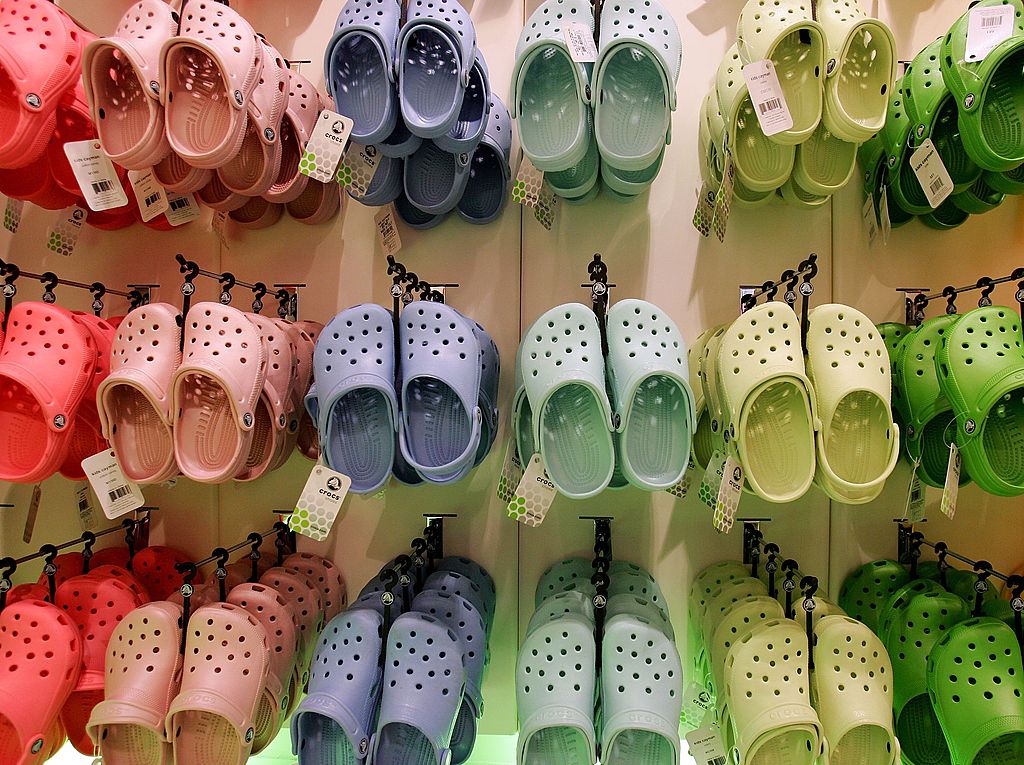‘I don’t get Brooklyn fashion,’ an out-of-towner said the other day. We were brunching at a French restaurant on Williamsburg’s Bedford Avenue, and eyeing a couple by the door — she dressed in faded black pipe-leg men’s jeans crudely cut off at the ankles above a pair of two-inch granny heels, he in a stained and tattered, burnt-orange Abercrombie & Fitch t-shirt draped like a cobweb on his skeletal frame.
‘It’s all about looking as shitty as possible,’ I told the tourist. ‘They like to blur the lines between the guy who just crapped his pants shooting up on the corner and having $200,000 in art school debt.’
In my youth I too was a thrift-store aficionado. I loved the hunt, digging around for the amusing, exquisite, old and odd. And it had to fit well, which made that bizarre old t-shirt, or tattered leather jacket, more precious when you did find it. At least that’s how it was at the beginning of the millennium here in Brooklyn, where the vintage t-shirt and trucker hat defined kitsch youth fashion for the rest of the nation.
That was the era of the ‘hipster’. At the time, grumpy older people — which I guess describes me today — scoffed at building an entire youth movement around irony, which means ‘devoid of passion or sincerity’. The hipster was annoying, don’t get me wrong, but in retrospect perhaps not so bad after all.
The hipster dress code had elements of humor and discovery. That’s not the sensibility on the streets of America’s hippest zip code today. The look du jour is not only riddled with nihilism but, most grotesquely, anger and disdain. Its vibe entails flopping on any old generic, unflattering, mass-produced article of 1990s clothing before heading out of the house. It’s best complimented by a home haircut and very bad skin. Think of it as Chinese-sweatshop-overflow chic, or late-stage-capitalism slouch. It’s a National Geographic photoshoot in a poverty-stricken village that just had a crate of Goodwill rejects parachuted in. The more stained, ill-fitting and unremarkable the garment, the better. Or not, because who cares?
There is artistry to that idea: dressing as commentary on decay, on globalism, on mass-society and corporate banality. But what I find most disturbing about the way the cool kids dress today is the air of hopelessness they project. While most well-adjusted adults I know struggle to make sense of the state of the world, the rising generation of New York’s ‘creative class’ appears to revel in the anti-aspirational.
All this might have passed me by had I not noticed the one accessory that’s all the rage with the young folk this year: Crocs.
The most unflattering shoe to come to market in generations is now ubiquitous among disaffected youth. While they may look like something the US military designed for children who’d had a foot blown off by a landmine, Crocs, once the telltale sign of a boomer who’d given up on life, are now a staple for a generation hoping to do the same.
These foam clogs were first unveiled at a boat show in Florida in 2001. Notably, they were sported soon after by President George W. Bush, who slipped them on over a pair of black socks in the look now known as White Dad Summer. Shortly thereafter, fashion car-wreck Michelle Obama was photographed wearing yellow Crocs.
The Colorado-based company has since sold over 300 million pairs worldwide. For America’s Young Stalinists they offer an added opportunity to amp up repulsiveness: political Jibbitz.
Jibbitz are Croc fashion accessories — small decorations clipped to the ventilation holes on the plastic abominations. Everything about that sentence should outrage you, but it gets worse. Whereas Jibbitz were once an outlet for your child to express Disney fandom, now you’ll find Black Lives Matter insignia, transgender flags, slogans like ‘Sex Work Is Real Work’, and, of course, hammers and sickles.
I spotted a scrawny gay couple dressed in shades of soot and matching Crocs, waiting for the L train — the Williamsburg Jitney — at Union Square. I had to ask, ‘Why are you wearing those shoes?’
‘They’re comfortable,’ one shrugged.
‘You’re in New York. Show some respect!’ I would have shouted if I hadn’t been suffocating on the stench of defeat.
‘Fashion is a form of ugliness so intolerable we have to alter it every six months,’ Oscar Wilde famously said. Like clockwork, in its Spring 2022 collection fashion house Balenciaga unveiled a pair of $1,000 stiletto Crocs, devoid entirely of either fashion or style.
An old friend comes to mind. He was one of the world’s top fashion reporters. He once even had his own clothing line that all the Upper East Side ladies went gaga over. He dressed almost exclusively in Levi’s and souvenir t-shirts. He had delightful style; he was supremely unfashionable. He’d show up in a boxy Nantucket tee to an event with the world’s most shallow snobs dressed like the antithesis of everything they believe in: a tourist. It wasn’t mockery of middle America but an expression of disdain against an industry he increasingly felt deserved it.
If you caught him in an off moment, he’d tell you about the days before Anna Wintour ruined everything. His was anti-fashion with soul, not what fills the streets now on a walk to the grocery store in communist Brooklyn. Now the posture conveyed belongs to mean-spirited bottom feeders, quitters, powerless and enslaved. It’s not angst, which I respect. It’s surrender.
This article was originally published in The Spectator’s October 2021 World edition.


















